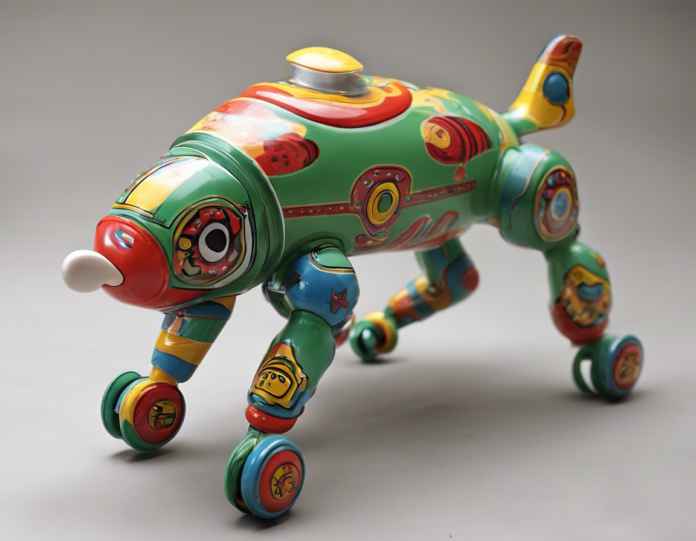Introduction
Wind-up toys have been captivating both children and adults for generations with their simple yet mesmerizing movements. These toys, powered by a spring mechanism that is wound up via a key or knob, come in various forms and designs, bringing joy and nostalgia to people of all ages. In this article, we will delve into the fascinating world of wind-up toys, exploring their history, mechanisms, types, and appeal.
History of Wind-Up Toys
Wind-up toys have a rich history that dates back to the 15th century. The earliest known wind-up toy is believed to be a mechanical monk created by Juanelo Turriano, a Spanish inventor, in the 16th century. These early wind-up toys were often intricately crafted and served as novelties for royalty and the wealthy. It wasn’t until the 19th century that wind-up toys became more affordable and accessible to the general public, thanks to advancements in manufacturing processes.
Mechanisms of Wind-Up Toys
The mechanism of a wind-up toy is relatively simple yet ingeniously designed. A key or knob is used to wind up a spring motor inside the toy. As the spring is wound up, it stores potential energy. When the spring is released, this energy is converted into kinetic energy, causing the toy to move. Depending on the design of the toy, the movements can vary from simple walking or hopping motions to more complex actions such as spinning, flipping, or jumping.
Types of Wind-Up Toys
Wind-up toys come in a wide range of types and designs, catering to different interests and preferences. Some popular types of wind-up toys include:
1. Animal Figures
Wind-up toys in the shape of animals, such as cats, dogs, and birds, are perennial favorites among children and collectors alike. These toys often feature realistic movements that mimic the behavior of the animals they represent.
2. Tin Robots
Tin robots are iconic wind-up toys that evoke a sense of nostalgia for the futuristic visions of the past. With their retro-futuristic designs and quirky movements, tin robots are sought after by collectors for their charm and novelty.
3. Cars and Trains
Wind-up cars and trains are classic toys that appeal to both children and adults who appreciate mechanical complexity. These toys often feature intricate details and realistic movements that mimic the motion of real vehicles.
4. Novelty Toys
From wind-up walking teeth to dancing figurines, novelty wind-up toys come in all shapes and sizes, adding a whimsical touch to any collection. These toys often feature humorous or quirky movements that bring a smile to the faces of those who watch them in action.
Appeal of Wind-Up Toys
The enduring appeal of wind-up toys lies in their simplicity, charm, and nostalgic value. Unlike modern electronic toys, wind-up toys rely on mechanical mechanisms that engage the imagination and provide a hands-on experience for users. The act of winding up a toy and watching it come to life creates a sense of wonder and delight that transcends age and time.
Collecting Wind-Up Toys
Wind-up toys have become coveted collectibles for enthusiasts around the world. Vintage wind-up toys, especially those from the early to mid-20th century, are highly sought after for their craftsmanship and historical value. Collectors often prize toys in mint condition with their original packaging intact, as these items command higher prices in the collector’s market.
Maintenance and Care
To ensure the longevity of wind-up toys, it is essential to handle them with care and perform regular maintenance. Here are some tips for maintaining wind-up toys:
- Avoid overwinding the spring, as this can cause damage to the mechanism.
- Store wind-up toys in a dry and dust-free environment to prevent corrosion and deterioration.
- Clean wind-up toys gently with a soft cloth to remove dirt and debris.
- Seek professional help for repairs or restoration if needed, especially for valuable or rare wind-up toys.
Conclusion
Wind-up toys continue to enchant and delight people of all ages with their whimsical movements and timeless appeal. Whether you are a collector looking to expand your collection or a parent seeking a charming toy for your child, wind-up toys offer a unique blend of nostalgia and entertainment that is sure to be cherished for years to come. Explore the diverse world of wind-up toys and discover the magic of these captivating creations.
FAQs (Frequently Asked Questions)
1. Are wind-up toys suitable for young children?
Yes, wind-up toys are generally safe for young children, but adult supervision is recommended to prevent any accidents or swallowing of small parts.
2. Can wind-up toys be repaired if they stop working?
Yes, many wind-up toys can be repaired or restored by skilled technicians who specialize in mechanical toys.
3. Are vintage wind-up toys valuable?
Vintage wind-up toys in good condition can be valuable, especially rare or limited-edition pieces from renowned manufacturers.
4. How long do wind-up toys typically last when fully wound up?
The duration of a wind-up toy’s movement varies depending on the toy’s design and the tension of the spring. On average, most wind-up toys run for a few minutes before needing to be rewound.
5. What is the best way to store wind-up toys when not in use?
It is best to store wind-up toys in a cool, dry place away from direct sunlight and moisture to prevent damage to the mechanisms and materials.









